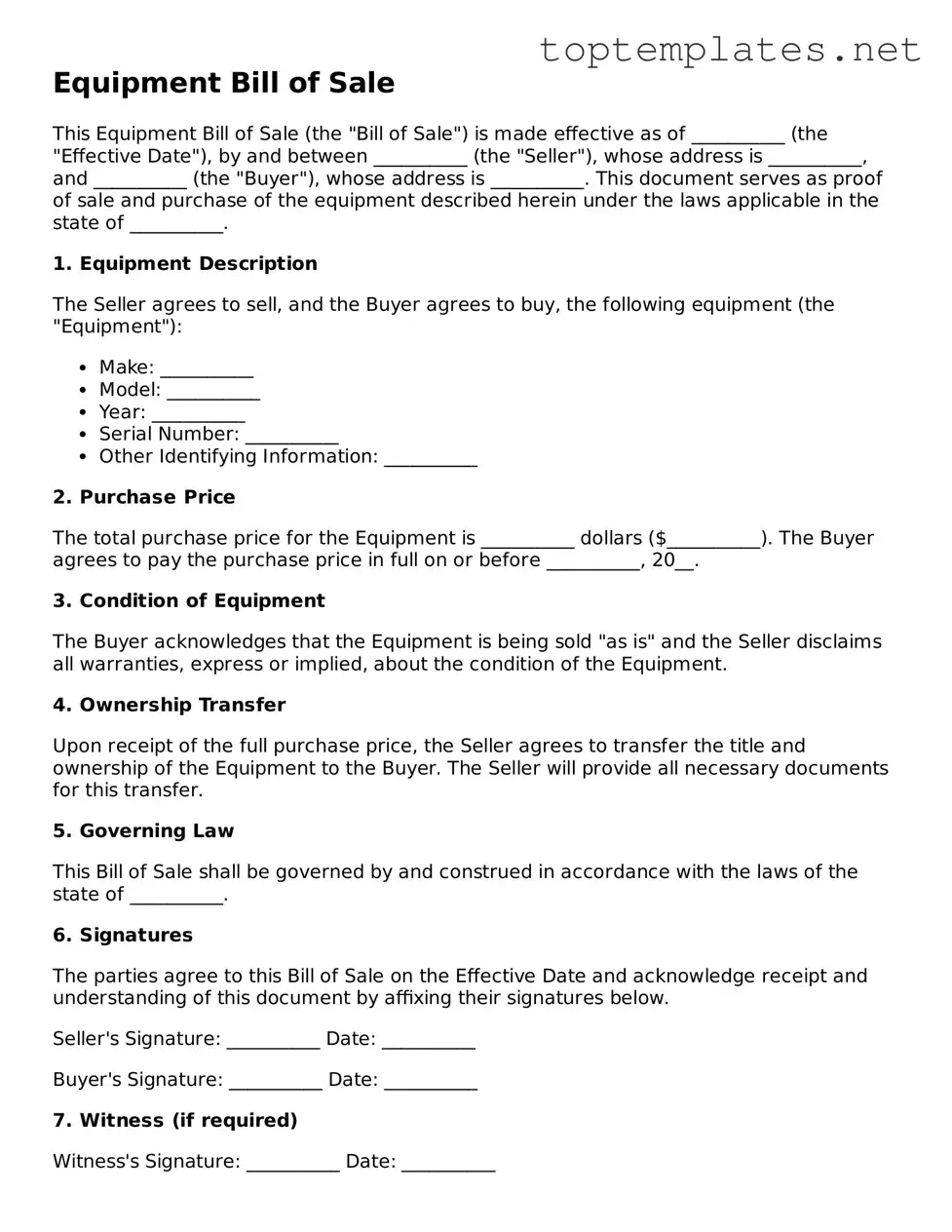Equipment Bill of Sale
This Equipment Bill of Sale (the "Bill of Sale") is made effective as of __________ (the "Effective Date"), by and between __________ (the "Seller"), whose address is __________, and __________ (the "Buyer"), whose address is __________. This document serves as proof of sale and purchase of the equipment described herein under the laws applicable in the state of __________.
1. Equipment Description
The Seller agrees to sell, and the Buyer agrees to buy, the following equipment (the "Equipment"):
- Make: __________
- Model: __________
- Year: __________
- Serial Number: __________
- Other Identifying Information: __________
2. Purchase Price
The total purchase price for the Equipment is __________ dollars ($__________). The Buyer agrees to pay the purchase price in full on or before __________, 20__.
3. Condition of Equipment
The Buyer acknowledges that the Equipment is being sold "as is" and the Seller disclaims all warranties, express or implied, about the condition of the Equipment.
4. Ownership Transfer
Upon receipt of the full purchase price, the Seller agrees to transfer the title and ownership of the Equipment to the Buyer. The Seller will provide all necessary documents for this transfer.
5. Governing Law
This Bill of Sale shall be governed by and construed in accordance with the laws of the state of __________.
6. Signatures
The parties agree to this Bill of Sale on the Effective Date and acknowledge receipt and understanding of this document by affixing their signatures below.
Seller's Signature: __________ Date: __________
Buyer's Signature: __________ Date: __________
7. Witness (if required)
Witness's Signature: __________ Date: __________
Print Name: __________
This document does not constitute legal advice. For legal advice specific to your needs, consult with a qualified attorney in your jurisdiction.
